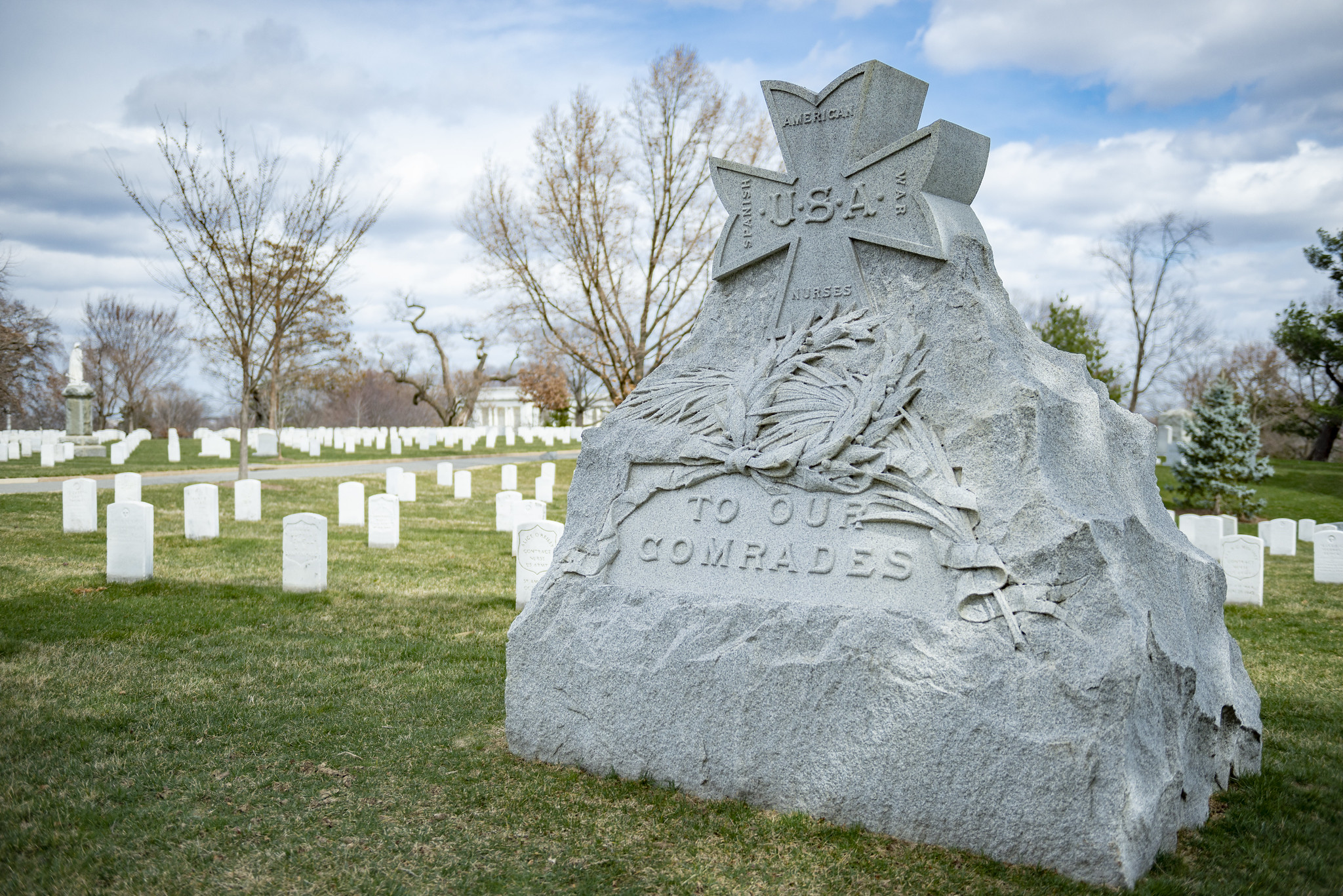Spanish-American War Nurses Memorial

The Spanish-American War (1898) was the first U.S. war in which nurses comprised a dedicated, quasi-military unit, and the first time in U.S. history that nurses were fully accepted in military hospitals. Although no nurses were killed in combat, 153 died from diseases during the war (including one, Clara Maass, who perished from yellow fever after volunteering to undergo Army experiments on that disease).
Nurses in the Spanish-American War worked 14-hour shifts with 20-minute lunch breaks. They provided their own uniforms, which they had to launder and maintain. Duties included dressing wounds, administering medicine, giving ice baths, preparing and serving food, and attempting to maintain sanitary conditions in tents, fields and overcrowded buildings. Many locations experienced nurse shortages, and some nurses worked until they were too ill to continue. The pay was $30 per month plus railroad fare to the assigned location, meals and sometimes lodging.
The Society of Spanish-American War Nurses dedicated a monument to the memory of those brave women volunteers who nursed the wounded and sick during this brief but historically important conflict. The large granite monument features a Maltese cross, the Society's insignia. Many of the nurses who served and lost their lives in the war are buried near the monument in Section 21 — sometimes called the "Nurses Section" because it contains the gravesites of hundreds of nurses who served in conflicts throughout U.S. history.
See also: